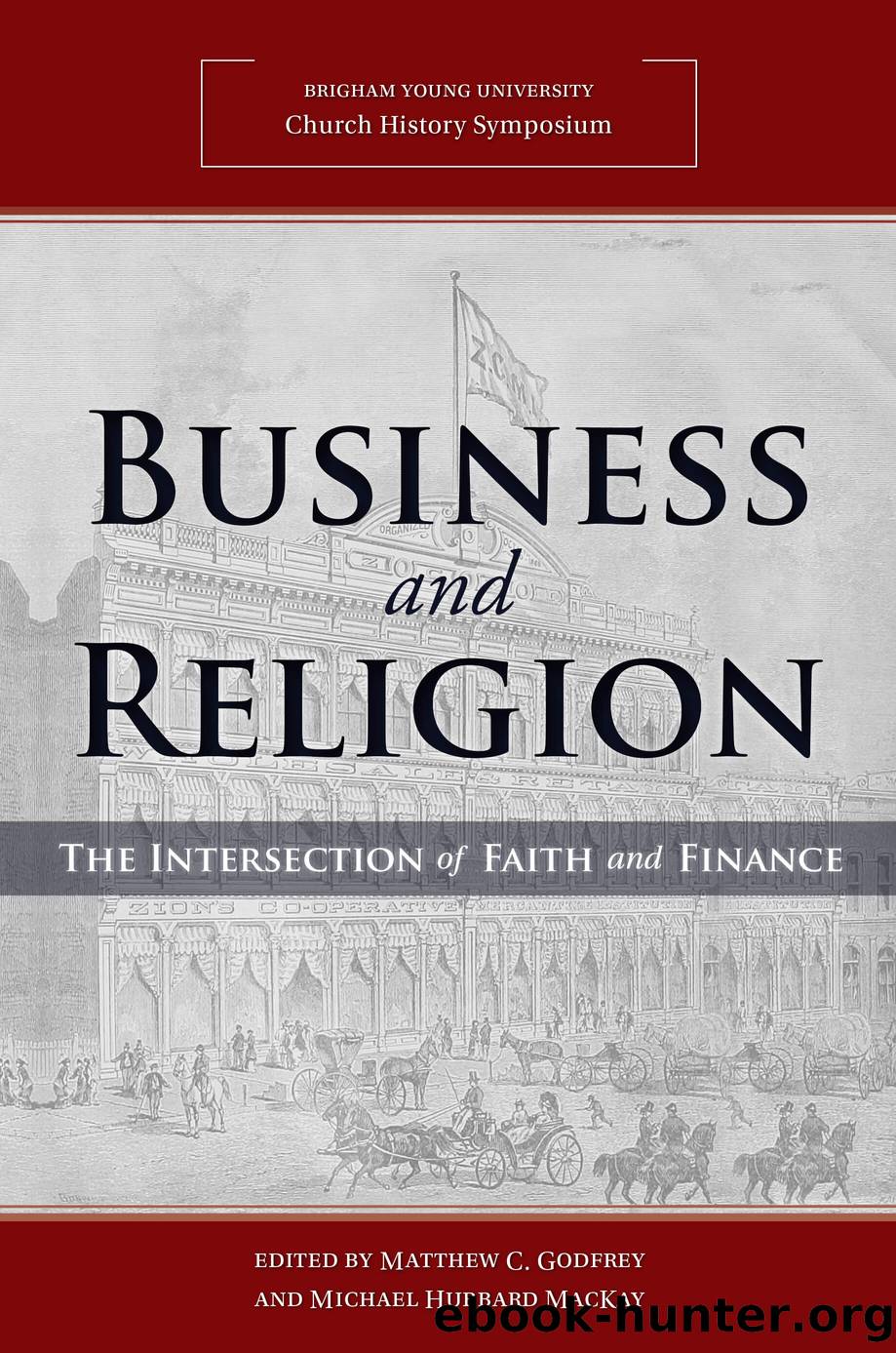Business and Religion by Matthew C. Godfrey

Author:Matthew C. Godfrey
Language: eng
Format: epub
Publisher: Deseret Book Company
Published: 2019-08-13T22:38:28+00:00
Eliza Maria Partridge Lyman. Courtesy of the Church History Library.
In the aforementioned 1870 letter, Eliza and Caroline informed Amasa that, among other necessities, their childrenâa total of eight minor childrenâwho were also his children, needed food.19 Elizaâs letter, in fact, reflects several areas in which her economic situation affected her lifeâs circumstances. She wrote that she had âno Husband to lighten my cares, no Father to provide for my children or to help me in rearing them, no home that I can call my own, no means that I can command to support myself and Family, all are gone, gone.â While strict economic realities matterâhow much food one has, where one lives, who is providingâthe mental, emotional and psychological impact of oneâs financial well-being on an individual is perhaps even more critical: not knowing if there will be enough food to eat or wood to burn today or tomorrow or next week or next month or next year affects oneâs daily outlook. Because of that insight, this paper focuses not just on the physical reality of their situation, but specifically on Elizaâs yearnings relating to economic stability in the following five areas: a consistent external provider, the assistance of others, the ability to provide for herself, the ability to share temporal resources with others, and a stable or comfortable home. I will explore the ways in which she yearned for each of these, and the varying degrees with which these yearnings were fulfilled in her life.
Early Life of Eliza Maria Partridge Lyman
Insights into Elizaâs early life help illustrate how her formative childhood years differ greatly in economic stability from her married life. Born in Painesville, Ohio, in 1820, to Edward and Lydia Clisbee Partridge, she was the oldest of seven children. Her father owned several pieces of landâeven though he was primarily a hatterâincluding three plots on the Main Street of Painesville, Ohio, and over 130 additional acres in two different parcels of land elsewhere.20 Elizaâs sister Emily later described the home the Partridge children grew up in as having ârose bushes and sweet-brierâ in front, and in the back âan arbor, or summer-house ⦠with seats on both sides ⦠covered with grapevines with clusters of blue grapes hanging among the leaves and twigs.â She also recalled flowers of many kinds, including âdaffodils, blue bells, lilly, iris, snowballs, etc.â lining the path between the house and arbor. Other foliage around the home included a âdelicious cling-stone peach,â a cherry tree, and a âlarge weeping willow near the shop.â The shop adjoined Partridgeâs hat store next to the street. A large frame barn and a âyard full of black fowlsâ with a cow and horse completed her word picture of their childhood home.21 The first ten years of Elizaâs life were a time of prosperity for her family.
In late 1830, her family joined what later became called The Church of Jesus Christ of Latter-day Saints and moved to Missouri within the year. After traveling to Missouri in the summer of
Download
This site does not store any files on its server. We only index and link to content provided by other sites. Please contact the content providers to delete copyright contents if any and email us, we'll remove relevant links or contents immediately.
| Catholicism | Christian Science |
| Jehovah's Witness | Mennonite |
| Messianic Judaism | Mormonism |
| Orthodoxy | Protestantism |
Fangirl by Rainbow Rowell(9052)
How to Bang a Billionaire by Alexis Hall(8055)
Wonder by R. J. Palacio(7928)
The Space Between by Michelle L. Teichman(6829)
The Thirst by Nesbo Jo(6786)
Assassin’s Fate by Robin Hobb(6085)
Wiseguy by Nicholas Pileggi(5631)
The Night Circus by Erin Morgenstern(5127)
The Kite Runner by Khaled Hosseini(5057)
Paper Towns by Green John(5057)
Bittersweet (True North #1) by Sarina Bowen(4772)
Gerald's Game by Stephen King(4541)
Too Much and Not the Mood by Durga Chew-Bose(4249)
Pillow Thoughts by Courtney Peppernell(4185)
Goodbye Paradise(3692)
Twelve Days of Christmas by Debbie Macomber(3486)
Good by S. Walden(3466)
The Rosie Effect by Graeme Simsion(3346)
The Cellar by Natasha Preston(3238)
